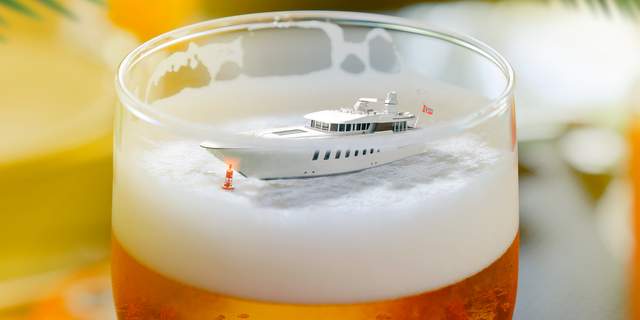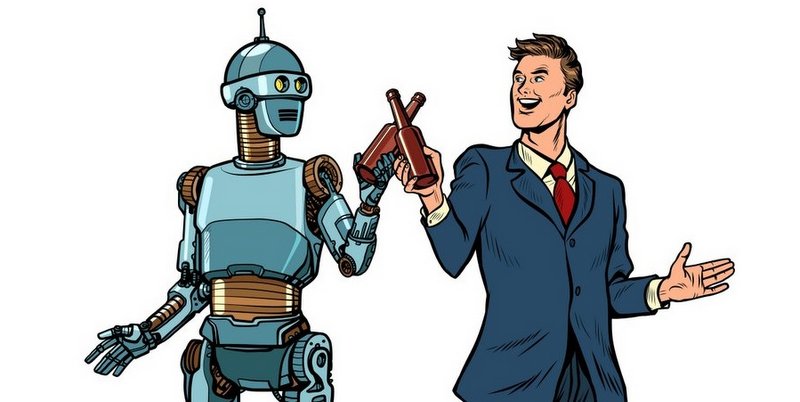
Rabobank is a Dutch multinational banking and financial services company. It’s one of the biggest banks in the world, and it has a focus on global food and agribusiness banking. Rabobank, which I always read as Robobank, occasionally sends me market analysis reports on the food and beverage industries. In fact, just this week, Rabobank sent me the 2022 Alcohol e-Commerce Playbook, which it claims “is the most comprehensive analysis of the U.S. alcohol e-commerce landscape on the market.” After reading it, I’m not inclined to argue the claim.
The 28-page report focuses on the impressive growth of alcohol e-commerce sales since the start of the pandemic, the reaction from consumers, retailers and brands and how companies can lay the groundwork for future success in the channel. According to the playbook, online sales now represent about 4 percent of all off-premise alcohol sales in the United States, increasing from nearly 1.9 percent in 2019. According to the press release:
Insights in the report were built on unique data sources and partnerships exclusive to Rabobank, and interviews with dozens of experts from alcohol companies that combined represent 70% of alcohol sales in the U.S.
“E-commerce will be the number-one driver of industry growth over the next decade and a critical component of brand building, awareness, and trial, both online and in-store,” said Bourcard Nesin, a RaboResearch F&A beverages analyst and author of the report. “Companies that fail to proactively invest in their e-commerce teams will struggle to remain relevant and retain market share.”
To convince you, here are 10 factiods from Robobank’s Rabobank’s 2022 Alcohol e-Commerce Playbook.
- Beer, like almost every online channel, underperforms online — likely due to its broad availability in physical retail, the demographics of the online shoppers and the higher pricing on some platforms.
- Larger formats perform better online than they do in-store — like a 12-pack of beer.
- Gopuff (who?), the Philadelphia-based startup that has pioneered quick delivery (less than 30 minutes), has become the third largest outlet for online beer sales in the United States, trailing only Instacart and Walmart, and by the end of 2022, they could sell more online than Kroger.
- While DTC shipments are a huge opportunity for spirits, the same is not true for beer. Beer is incredibly heavy and incredibly cheap compared to wine and spirits. A very high-end four-pack of craft beer in 16-oz cans costs USD $20 and weights 4 lbs.
- The two channels most important for large brands and retailers — online grocery and marketplaces — grew 271 percent in just two years and are now nearly four times larger than they were in 2019.
- Rabobank projects online alcohol sales will grow an additional 3.4 percent in 2022.
- At the end of 2019, only 200 Walmart locations delivered alcohol, but by the end of 2021, there were 1,500 delivering alcohol. Alcohol sales in the online grocery channel are expected to grow 15 percent in 2022.
- The pandemic helped marketplaces such as Drizly and Instacart acquire millions of customers and add thousands of stores to their retail networks. That combination drove 274 percent YOY growth in the online alcohol marketplaces channel in 2020. The success in the channel has resulted in major M&A activity, the most notable transaction being Uber’s 2021 acquisition of Drizly. Rabobank estimates the channel will grow 15 percent in 2022.
- Licensed Specialty Retailers: The channel, which includes large chain liquor stores, state-owned stores and thousands of independent mom-and-pop shops with an online offering, grew 151 percent in 2020.
- Online alcohol sales grew 131 percent since 2019, easily outpacing overall food and beverage.
Learn more right over here. Readers can visit the page and contact Rabobank if they want to get the full report.






Leave a Reply
You must be logged in to post a comment.